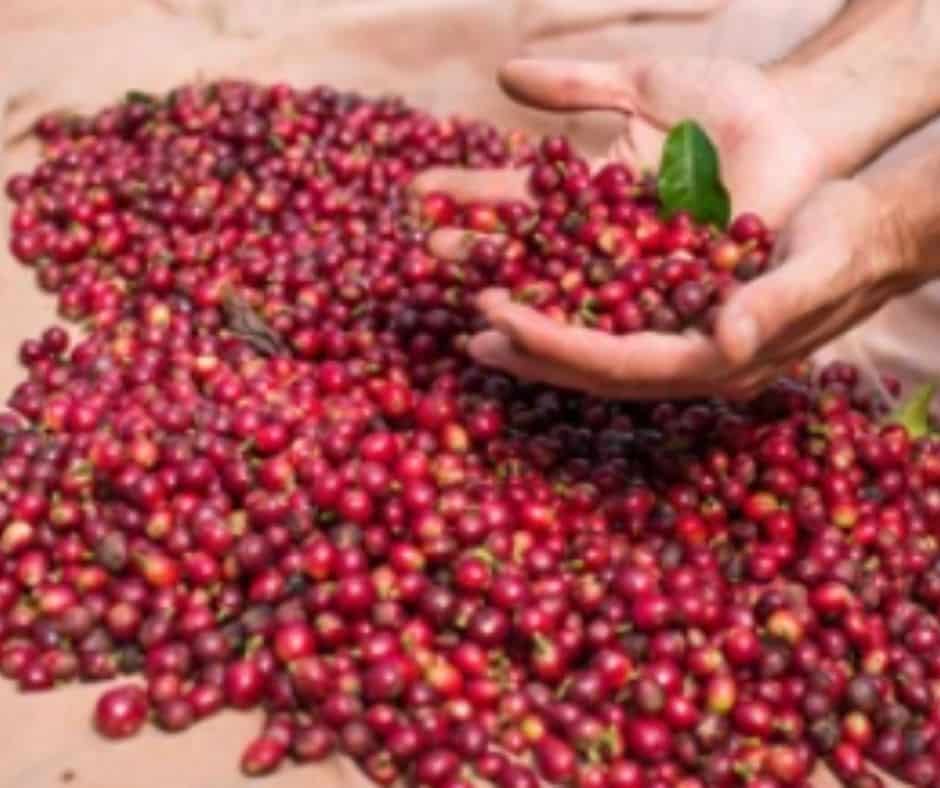How to make Colombian coffee
In Colombia, coffee is much more than a drink to be enjoyed. It’s a national passion and a way of life. Colombian coffee is grown in the world’s best coffee regions, and it has been exported to the rest of the world for over 100 years.
Colombian coffee is often considered the best in the world. In fact, it has won more prizes for quality than any other country. Colombian coffees are also some of the most expensive on the world market, which is no coincidence since they have such delicious taste and aroma.
The main thing that makes Colombian coffee so good is that it originates from arabica beans, which are grown at high altitudes between 2200–2400 meters (7200-7900 feet). The higher altitudes increase the acidity of the plant and its fruit, which results in a deeper and more robust flavor.
Use freshly roasted beans! Because of their special growing conditions, Colombian coffee beans are among the most delicate in the world and need to be ground immediately before brewing. If possible, buy whole beans and grind them just before use. If you don’t have a grinder on hand, try using an electric grinder or a mortar & pestle to get your beans finely ground.
The methods used to make coffee in Colombia are very specific. The coffee culture can be traced back to the early 1900s when Juan Valdez and his mule first graced the covers of magazines around the world. This helped put Colombian coffee on the map. Coffee shops can be found everywhere in Colombia, both in rural areas and in major cities such as Bogota or Medellin.
Colombian coffee is roasted fresh every day by street vendors who work from small carts that are equipped with large roasters. These roasters are powered by propane tanks, which make them very convenient for traveling around cities where many people want their daily cup of fresh Colombian coffee.
The beans are ground immediately before brewing to ensure that each cup tastes fresh and delicious!
Single origin or Blends
Table of Contents
Colombian coffee beans are very popular in the market today. Coffee connoisseurs claim that this is one of the finest gourmet coffees in the world. It is not just for drinking but can be an expensive addition to your collection. The demand for this coffee has increased over the years due to its unique taste and aroma. However, this type of coffee comes in two varieties: single origin and blended.
Single-origin: This Colombian coffee is manufactured entirely from beans grown in Colombia. It means they don’t combine their beans or produce with any other type of bean or vegetable. This is a significant accomplishment since they were able to combine two distinct types of coffee beans and generate a delicious cup of coffee.
Blended Origin: Blended Colombian coffee is made out of a combination of Brazilian, Central American, and Colombian roasts. These mixes have a variety of flavors, each of which is distinct in its own way.
How to make Colombian Coffee

“The best coffee in the world is grown and produced in Colombia,” says the Colombian Coffee Growers Federation. That’s some pretty stiff competition for other countries, but it’s not just marketing. Studies show that Colombia has a greater concentration of varietals, which means more diversity when it comes to the beans themselves than almost any other country.
Tastes and preferences vary around the world, so there’s no universal recipe for brewing the perfect cup of java. However, there are a few things you can do to make sure you’re enjoying your Colombian brew at its best.
Use good water: The quality of your water will affect how your coffee tastes. If you’re using tap water, filter it through a filter or bottled water before using it to brew your coffee. Avoid distilled or mineral-heavy waters as these will affect the taste of your coffee as well.
Use fresh beans: Don’t buy pre-ground Colombian beans if you can help it; instead, buy whole beans and grind them yourself immediately before brewing. The sooner you use the beans after grinding them, the better they’ll taste in your brews.
Coffee to water ratio: Use two tablespoons of ground Colombian coffee for every six ounces of water used in your brew.
What makes Colombian coffee different

There are many different types of coffee in the world. Colombian coffee is one of the most popular and is well known for its excellent quality. Colombian coffee beans are often sought after because of their flavor and aroma.
What makes Colombian coffee different from other coffees?
Colombia is a major growing region for Arabica coffee, so it’s no surprise that the best coffee in Colombia comes from this area. The climate in Colombia is ideal for growing coffee plants, which grow at an elevation between 1,000 and 2,000 meters above sea level.
The climate in Colombia produces a mild temperature year-round, which allows the beans to ripen evenly. Colombian coffee beans are also grown in volcanic soil which helps to balance out the alkaloid acids found in the plant.
Coffee plants require a lot of attention at first, but once they get going they can produce beans for up to 20 years! Depending on the region and elevation of the plants, harvests can be done between March and December every year.
The beans are harvested by hand and sorted by size before being dried. Many factors go into drying the beans, including ventilation and humidity levels. The drying process can take anywhere from three days to two weeks depending on the region, with
Why is Colombian Coffee so good?
Colombian coffee, including those of some other countries, is widely regarded as among the greatest in the world. But what distinguishes one country’s coffee from another’s? Isn’t it only coffee, after all? The basic answer is no; nevertheless, continue reading to see why Colombian coffee is so delicious.
Three main elements influence the quality of coffee. The three factors are listed below, along with an explanation of why each one is so important in making Colombian coffee taste so delicious.
- Geography and climate
Colombia’s terrain is almost ideal for growing coffee, a delicate commodity that requires just the right circumstances to thrive. The depth of flavor that Colombian coffee is known for is mostly due to a favorable climate, ideal soil, and just the proper quantity of rainfall. Coffee grows best in climates with at least 200 centimetres (80 inches) of annual rainfall and temperatures that never drop below freezing.
- The growing and harvesting process
When it comes to creating great coffee, this is a must-have ingredient. It’s not enough to have the appropriate climate and terrain if your methods of planting and collecting coffee beans are sloppy or badly executed. Each bean is hand-picked and grown on steep slopes, ideally bordered by trees and banana plants that provide much-needed shade and keep the beans from blistering in the harsh sun. Yes, you read that right: each of Colombia’s over 600,000 coffee farmers harvests every bean by hand.
- The type of coffee
Coffee isn’t just coffee. There are two different types of coffee beans: arabica and robusta (as well as new varieties produced within those two species). Colombia, with its perfect terrain and climate, is one of the only countries that produce 100% arabica beans. But what does this have to do with the quality of Colombian coffee?
It’s simple. Arabica is widely considered to be the superior bean, and it is blessed with a sweeter and lighter taste, as well as less caffeine – about half the amount – and stronger acidic notes. In short, arabica produces a tastier, richer cup of coffee than robusta, and Colombia’s 100% arabica status is bound to add up to some pretty amazing coffee.
How long do you steep Colombian Blend Coffee
Although steeping coffee is a straightforward process, it is not without its difficulties. Making the perfect cup of coffee requires knowledge on how much coffee to use, how long to steep it for, how hot the water should be, and what equipment to use.
This delicious, full-bodied coffee should steep in about 12 to 15 minutes. It all depends on how intense and flavorful you want it to be. For a lighter brew, keep it under twelve minutes. If you want your coffee strong, increase the time to fifteen minutes.
Steeping is always a personal preference. Some people like it strong, some like it weak.
The only way to know how you like your coffee is to try different steeping times and see what you prefer. You may find that no time suits your tastes best, and you have to experiment with different types of coffee.
Method: Fill your coffee filter with the desired amount. Before closing the basket and placing the filter in it, double-check that all of the coffee has been added. Place the pot on medium heat for ten minutes before adding any water to the machine’s top. Check it every five minutes after you’ve added this water till it achieves your preferred taste.
Why is Colombian coffee so special?
Colombian coffee is a fan favorite due to its distinct flavors and robust scent. So, what makes it so unique and appealing? When we talk about coffee from certain places, we usually refer to a traditional brewing or roasting procedure. Coffee culture is distinct among the many countries that enjoy coffee around the world. We’re not talking about brewing or roasting when we talk about Colombian coffee; we’re talking about how the bean is farmed.
Colombia has a near-ideal climate for growing coffee, and Colombian coffee produces a unique bean as a result of the environment. Colombia receives a lot of rain, and the environment never gets near to freezing temperatures, no matter what time of year it is. The tropical climate is ideal for growing coffee, and it accomplishes just that! Colombia has about 600,000 coffee producers, the majority of whom select the beans by hand.
Of course, there’s still a lot that can go wrong after the beans are grown: they must be properly roasted and brewed, and a mistake in these processes can drastically alter the flavor of a Colombian cup. When you buy Colombian coffee, though, you’re always getting a terrific deal.
Difference between Colombian and Arabic Coffee
The difference between Arabic & Colombian coffee is that Arabic coffee is made in Arabic countries and the beans aren’t washed during processing, so it has a strong flavor, whereas Colombian coffee is made in Columbia and the beans are washed during processing, so it has a milder flavor than Arabic coffee.
The two main crash crops from which coffee beans are obtained are Coffea Arabica and Coffea Canephora (Robusta Coffee). Arabic coffee, also known as Coffea Arabica, is thought to be the first species of coffee to be produced, with its origins in Yemen. It accounts for the majority of global coffee output.
Colombian coffee is prepared from Arabica beans that are farmed entirely on Colombian plantations. Arabic and Colombian coffees differ in strength, taste, and preparation method due to differences in the places where the two varieties of coffee crops are grown, as well as altering soil and climate.
The following are comparisons between Colombian and Arabic Coffee:
1. Origin: Arabian coffee is originated from the Arab countries like Yemen, where it was first cultivated, Egypt and Syria while Colombian coffee is completely made from Arabic coffee beans which are grown in the farms of Colombia
2. Taste; Arabic Coffee has a strong taste which isles bitter and less caffeinated than Robust Coffee while Colombian coffee has a softer and milder taste as compared to the Arabic coffee
3. Processing: The coffee beans extracted from dried cherries are directly roasted without washing for Arabic Coffee while the pulp from coffee beans which are extracted from dried cherries is washed off for 2-3 days via a very skillful process before the beans are roasted for Colombian coffee.
4. Preparation: Arabic Coffee needs to be brewed before consumption while Colombian coffee is more of an ‘instant coffee’ and may or may not be brewed before consumption
5. Service: Arabic Coffee is served in small decorative cups called ‘finjāns’ up to a few centiliters. It may also be put into a larger kettle called ‘Della’ for pouring purposes while Colombian coffee has no traditional or specific way of serving it.
Does Starbucks use Colombian Coffee?
With over four decades of experience and competence in the industry, Starbucks is the world’s largest specialty coffee roaster and retailer. The company was formed on the pursuit of high-quality coffee and its passion for it. Starbucks is proud to source, roast, and serve Colombian coffee in 62 countries across the world. Colombian coffees are among the most reliable in terms of taste and quality, and they’re used in several Starbucks signature blends like Espresso Roast and House Blend. Starbucks began buying coffee from Colombia in 1971 and now buys from eight different growing regions across the country. Starbucks now buys more high-quality arabica coffee from Colombia than anyone else in the world.
What is Colombia Blend Coffee?
The term Colombia blend coffee refers to a specific blend of 100% Arabica coffee. The exact contents of the blend are not fixed and can vary significantly by origin and producer, but the following is a typical composition:
Brazilian Coffee Beans – 25%
Colombian Coffee Beans – 20%
Costa Rican Coffee Beans – 20%
Ecuadorian Coffee Beans – 10%
Peruvian Coffee Beans – 10%
Nicaraguan Coffee Beans – 5%
Guatemalan Coffee Beans – 5%
Venezuelan Coffee Beans – 5%
The Colombian part of the name comes from the fact that the country is the largest grower and exporter of this type of coffee. As with most blends, there is no single “Colombia” variety of Arabica; in fact, most Colombian coffee is a mixture of several varieties. While it’s possible to buy 100% Colombian beans, you’re unlikely to find them in a shop or online. Compared to most other commercial coffees, a lot less care goes into grading and sorting the beans before they are roasted. This means that you’ll find many more small and broken beans among your roasted grounds than you would with a single-origin brew.
Colombia has been famous for its top-quality coffee for years. It has always been appreciated by the taste of the most demanding coffee-lovers. The country’s climate and natural resources have produced some of the best beans in the world.
Mainly because of its high level of caffeine, it is consumed in large quantities by people who work on shifts or people who do physical activities like sport or dance. It is also excellent to help you stay awake if you suffer from sleep problems (insomnia).
Other health benefits include:
- Helps reduce blood pressure;
- Helps aid digestion and prevent constipation;
- Powerful antioxidant properties;
- Good source of molybdenum and potassium;
- The perfect after-dinner drink;
- Powerful stimulant







